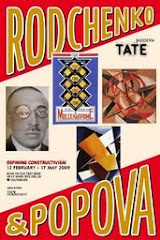I want to talk to you now about the role museums play in producing and reproducing ‘knowledge’ of the past and how they contribute to a particular view of society with reference to the Tate Modern as a site of discursive practice.
The key idea of ‘discursive practices’ is that they must contain rules1 which define and separate 'truth' from 'falsity'. Museums in general do this by narrating a story in the present about the past according to a particular set of 'rules' which attempt to render a story 'true'. Museums have a great amount of control over what gets to be exhibited and how it is displayed.
Our ability (not quite the right word) to challenge their authority can be explained in a couple of ways.
Firstly, in the way that museums themselves are products of a particular time and space. Museums emerged in the geographical so-called 'West' and are usually viewed as places in which objects of historical, artistic, or scientific interest are exhibited and preserved. This location in the west has had an effect on the way the museums' buildings are designed, on what they hold and on the kind of visitor they attract.
The Tate Modern originally had as its aim to be a place to define and safeguard heritage. This was the mission statement of most museums. As places that held categorised collections of exotic antiquities and curiosities brought back from the civilising missions of European colonialists, museums definitely could be accused of orientalising the other. So, these items and the way they were displayed told us much more about the ideology of the society in which the museum is than where the objects came from. Objects are taken out of their original context and re-embedded within an artificial environment which in itself contributes to the type of myth that is told.
The second way in which authority is exercised is through the control of visitor behaviour by the design of the building. In Discipline and Punish Foucault discusses the concept of prisons being designed along the lines of an all-seeing eye which demands respect and not to be questioned. He was not so much saying that all prisons were designed like this but that the panopticon concept embodies a new way of controlling society and therefore a new conception of society.
Slide: Rodchenko ‘s big brother
These ideas of a new society can also be seen in the way museums discipline visitor behaviour. Visitors behaviour, for example, is controlled by the way objects are displayed, by the stories they tell and also by the design of the building itself. Often referred to resemble temples or places of religious worship they enact upon the visitor a sense of awe and reverence for the objects but also for an unquestioned past. With objects being kept out of reach visitors are only to passively observe and accept the story they are being told; there is no chance for dialogue between the visitors and the objects. And the visitor does all this largely unaware of the ideological pressures being put on them.
Show slide/blog on the Sun exhibition.
Quote: by the artist Jake Chapman ‘You feel very small in the face of magnitude of this cathedral. It sends messages for miles: this is important, this is a sacred place, everything here is sacred. Things that are sacred are not questioned and that’s the problem’
In this exhibition behaviour is further modified by a number of things. In permanent exhibitions the visitor is free to wander around and absorb information in their own time. Temporary ones though are usually accompanied by an entrance fee (although entrance is free to people who can afford membership), a time-allocated entry slot, a strictly narrated sequence of objects and assumption of a prior, if not indepth, knowledge of art history.
The curator Margarita Tupitsyn exhibitions put together the exhibition based on two artists-one male, one female. This to me is a deliberate attempt to reinforce the fact that gender equality was an important communist ideal. Rodchenko’s wife was a major artist in her own right but by choosing to exhibit Popova the curator is emphasising how female artists were being taken as seriously as male ones for the first time. The extent to which the movement managed to challenge previous sexist inequality…?
Timeline.
conclusion
The extent to Popova maintained
What we know about the past can only be a representation.
Panopticism. We have given the museum to…narrate.
Time-line as the myth of history progressing and reducing the diffuse artists into categories which can be rationalised and can then become absorbed into a body of art knowledge.
The fact that you have to go past it reinforces their authority as the narrators of art history and authors of knowledge.
Production and reproduction of knowledge.
Reviews.
Panopticon.
The Tate modern itself is ‘a story brimming with symbols’.
Thursday, 30 April 2009
Subscribe to:
Post Comments (Atom)

No comments:
Post a Comment